- Home
- Gaston Leroux
Phantom of the Opera (Barnes & Noble Classics Series) Page 29
Phantom of the Opera (Barnes & Noble Classics Series) Read online
Page 29
“The fine stone employed in the construction was brought from quarries in Sweden, Scotland, Italy, Algeria, Finland, Spain, Belgium and France. While work on the exterior was in progress, the building was covered in by a wooden shell, rendered transparent by thousands of small panes of glass. In 1867 a swarm of men, supplied with hammers and axes, stripped the house of its habit, and showed in all its splendour the great structure. No picture can do justice to the rich colours of the edifice or to the harmonious tone resulting from the skilful use of many diverse materials. The effect of the frontage is completed by the cupola of the auditorium, topped with a cap of bronze sparingly adorned with gilding. Farther on, on a level with the towers of Notre-Dame, is the gable end of the roof of the stage, a ‘Pegasus,’ by M. Lequesne, rising at either end of the roof, and a bronze group by M. Millet, representing ‘Apollo lifting his golden lyre,’ commanding the apex. Apollo, it may here be mentioned, is useful as well as ornamental, for his lyre is tipped with a metal point which does duty as a lightning-rod, and conducts the fluid to the body and down the nether limbs of the god.
“The spectator, having climbed ten steps and left behind him a gateway, reaches a vestibule in which are statues of Lully, Rameau, Gluck, and Handel. Ten steps of green Swedish marble lead to a second vestibule for ticket-sellers. Visitors who enter by the pavilion reserved for carriages pass through a hallway where ticket offices are situated. The larger number of the audience, before entering the auditorium, traverse a large circular vestibule located exactly beneath it. The ceiling of this portion of the building is upheld by sixteen fluted columns of Jura stone, with white marble capitals, forming a portico. Here servants are to await their masters, and spectators may remain until their carriages are summoned. The third entrance, which is quite distinct from the others, is reserved for the Executive. The section of the building set aside for the use of the Emperor Napoleon was to have included an antechamber for the bodyguards; a salon for the aides-de-camp; a large salon and a smaller one for the Empress; hat and cloak rooms, etc. Moreover, there were to be in close proximity to the entrance, stables for three coaches, for the outriders’ horses, and for the twenty-one horsemen acting as an escort; a station for a squad of infantry of thirty-one men and ten cent-gardes, and a stable for the horses of the latter; and, besides, a salon for fifteen or twenty domestics. Thus arrangements had to be made to accommodate in this part of the building about one hundred persons, fifty horses, and half-a-dozen carriages. The fall of the Empire suggested some changes, but ample provision still exists for emergencies.
“Its novel conception, perfect fitness, and rare splendor of material, make the grand stairway unquestionably one of the most remarkable features of the building. It presents to the spectator, who has just passed through the subscribers’ pavilion, a gorgeous picture. From this point he beholds the ceiling formed by the central landing; this and the columns sustaining it, built of Echaillon stone, are honey-combed with arabesques and heavy with ornaments; the steps are of white marble, and antique red marble balusters rest on green marble sockets and support a balustrade of onyx. To the right and to the left of this landing are stairways to the floor, on a plane with the first row boxes. On this floor stand thirty monolith columns of Sarrancolin marble, with white marble bases and capitals. Pilasters of peach-blossom and violet stone are against the corresponding walls. More than fifty blocks had to be extracted from the quarry to find thirty perfect monoliths.
“The foyer de la danse has particular interest for the habitués of the Opera. It is a place of reunion to which subscribers to three performances a week are admitted between the acts in accordance with a usage established in 1870. Three immense looking-glasses cover the back wall of the foyer, and a chandelier with one hundred and seven burners supplies it with light. The paintings include twenty oval medallions, in which are portrayed the twenty danseuses of most celebrity since the opera has existed in France, and four panels by M. Boulanger, typifying ‘The War Dance,’ ‘The Rustic Dance,’ ‘The Dance of Love’ and ‘The Bacchic Dance.’ While the ladies of the ballet receive their admirers in this foyer, they can practise their steps. Velvet-cushioned bars have to this end been secured at convenient points, and the floor has been given the same slope as that of the stage, so that the labour expended may be thoroughly profitable to the performance. The singers’ foyer, on the same floor, is a much less lively resort than the foyer de la danse, as vocalists rarely leave their dressing-rooms before they are summoned to the stage. Thirty panels with portraits of the artists of repute in the annals of the Opera adorn this foyer.
“Some estimate ... may be arrived at by sitting before the concierge an hour or so before the representation commences. First appear the stage carpenters, who are always seventy, and sometimes, when L‘Africaine, for example, with its ship scene, is the opera, one hundred and ten strong. Then come stage upholsterers, whose sole duty is to lay carpets, hang curtains, etc.; gas-men, and a squad of firemen. Claqueurs, call-boys, property-men, dressers, coiffeurs, supernumeraries, and artists, follow. The supernumeraries number about one hundred; some are hired by the year, but the ‘masses’ are generally recruited at the last minute and are generally working-men who seek to add to their meagre earnings. There are about a hundred choristers, and about eighty musicians.
“Next we behold equeries, whose horses are hoisted on the stage by means of an elevator; electricians who manage the light-producing batteries; hydrauliciens to take charge of the water-works in ballets like La Source; artificers who prepare the conflagration in Le Profeta; florists who make ready Margarita’s garden, and a host of minor employees. This personnel is provided for as follows: Eighty dressing-rooms are reserved for the artists, each including a small ante-chamber, the dressing-room proper, and a little closet. Besides these apartments, the Opera has a dressing-room for sixty male, and another for fifty female choristers; a third for thirty-four male dancers; four dressing-rooms for twenty female dancers of different grades; a dressing-room for one hundred and ninety supernumeraries, etc.”
A few figures taken from the article will suggest the enormous capacity and the perfect convenience of the house. “There are 2,531 doors and 7,593 keys; 14 furnaces and 450 grates heat the house; the gaspipes if connected would form a pipe almost 16 miles long; 9 reservoirs, and two tanks hold 22,222 gallons of water and distribute their contents through 22,829 2-5 feet of piping; 538 persons have places assigned wherein to change their attire. The musicians have a foyer with 100 closets for their instruments.”
The author remarks of his visit to the Opera House that it “was almost as bewildering as it was agreeable. Giant stairways and colossal halls, huge frescoes and enormous mirrors, gold and marble, satin and velvet, met the eye at every turn.”
In a recent letter Mr. André Castaigne, whose remarkable pictures illustrate the text, speaks of a river or lake under the Opera House and mentions the fact that there are now also three metropolitan railway tunnels, one on top of the other.
Endnotes
PROLOGUE
1 (p. 5) events do not date more than thirty years back: This reference situates the events of The Phantom of the Opera in the early 1880s. Although there are a number of slight anachronisms, other specific dates mentioned reasonably allow us to pinpoint the action of the novel—which spans only a few weeks—to sometime between 1882 and 1885.
2 (p. 5) Rue-Scribe side: The Paris Opera House (better known today as the Palais Garnier or the Opera Garnier) is located in Paris’s ninth arrondissement and is bordered to the northwest by the rue Scribe. It is one of the two opera houses of the Opera National de Paris. The other, the Opera Bastille, opened in 1989 and is located in the eleventh arrondissement. The rue Scribe was named for the nineteenth-century librettist Augustin-Eugène Scribe ( 1791-1861 ) . To give the reader a clear sense of the streets in the immediate vicinity of the Opera House that are referenced in the text, a map is provided (see page xxxi).
3 (p. 6) I had spent long hours over The Memoirs of a Manager
: This memoir, which will be cited on numerous occasions by the narrator, is entirely fictional.
4 (p. 8) before burying the phonographic records of the artists‘voices: The narrator makes reference here to a time capsule of recordings buried near the Opera House’s underground lake in 1907.
5 (p. 8) of the Commune: Following France’s capitulation in the Franco-Prussian War in 1871, many citizens of Paris refused to accept the national government’s surrender to Germany. They established a revolutionary government and staged a revolt—commonly known today as the Paris Commune—which lasted nearly three months (from March to May 1871) and resulted in the loss of many thousands of lives and in thousands of arrests and deportations. The Paris Commune has since been embraced, most famously by Karl Marx, as the first workers’ revolution. The still-unfinished opera house was used first for storage, and later became the headquarters of the Communards; its underground also served as their makeshift prison.
6 (p. 9) set great store: It is interesting to note the way in which Leroux uses this prologue to simultaneously deflate and create suspense. Indeed, at the same time that he reveals principal elements of the novel’s plot—Christine’s kidnapping, Raoul’s disappearance, Count Philippe’s death, the ghost’s death—his continued attention to the “veracity” of the story spurs the reader’s curiosity about how these events came to take place. As we will see, the interplay between the real and the fantastic will be constantly attenuated by this narrative insistence.
CHAPTER 1: IS IT THE GHOST?
1 (p. 11 ) after “dancing” Polyeucte: This reference is to Charles Gounod’s 1878 opera, based on Pierre Corneille’s 1643 tragedy of the same name. Gounod ( 1818-1893) composed more than a dozen operas, the most famous of which is his 1859 Faust, which will figure prominently in the novel on both real and symbolic levels.
2 (p. 11 ) Rue le Peletier: The Opera de la rue le Peletier served as Paris’s official opera house from 1821 until it burned to the ground in 1873. It was not far from where the new opera house was constructed (see map on page xxxi).
3 (p. 13) that nose is a horrible thing to look at: Throughout the novel, Leroux uses italics in a very particular way to emphasize pieces of dialogue and description. Many critics have commented on the purpose and effectiveness of this unique stylistic trait, used in most of his novels.
4 (p. 13) manager of the Opera: This is the first of a number of footnotes that the narrator will provide. The notes reinforce the illusion of veracity that Leroux strives to create and maintain throughout the novel by layering “proof” upon “proof.”
5 (p. 15) the absent Persian: First mentioned in the Prologue and referenced briefly here, the character of the Persian will become increasingly important both in terms of the role he plays in the events of the novel and in the shaping of the story; he will “narrate” five chapters near the closing of the book.
6 (p. 19) Roi de Lahore: This reference is to an opera by Jules Massenet (1842-1912), Le Roi de Lahore ( The King of Lahore), first performed in 1877.
CHAPTER 2: THE NEW MARGARITA
1 (p. 20) Gounod had conducted the Funeral March of a Marionette ... drinking song in Lucrezia Borgia: For the most part, the composers, singers, and works mentioned here are real and accurate for the period depicted in the novel. Leroux extensively researched the era in which the novel is situated, and his attention to detail not only adds depth to the story but also serves to heighten the narrator’s credibility.
2 (p. 20) a few passages from Romeo and Juliet: The reference is to Gounod’s 1867 opera based on Shakespeare’s play.
3 (p. 21) final trio in Faust: Based on Goethe’s famous 1808 play, Gounod’s operatic Faust (1859) is one of the most-performed operas of the nineteenth and twentieth centuries. The principal roles are Faust, Mephistopheles, and Margarita. Siebel, whom the narrator notes Christine has played to this point, is a minor male role.
4 (p. 22) in search of the survivors of the D’Artoi’s expedition ... for three years: Although the dates are not accurate, survivors of this real-life expedition could indeed be found. Leroux was the first European journalist to speak with the explorer and his crew after their rescue.
5 (p. 23) the Opera was one of those places: This long description of Philippe establishes him as the perfect example of the real and literary type of aristocratic playboy popular in nineteenth-century France.
CHAPTER 4: BOX FIVE
1 (p. 38) Rue Scribe... Rue Auber: The streets mentioned here are to the south and west of the Opera House (see map on page xxxi) .
2 (p. 42) Rue de Provence: This is a street to the north of the Opera House (see map on page xxxi) .
3 (p. 44) Rue Mogador: This is a street to the east of the Opera House (see map on page xxxi) .
4 (p. 45) “They were playing La Juive [The Jewess]: This popular nineteenth-century opera, composed by Jacques Halévy (1799-1862), was first performed in 1835.
CHAPTER 5: THE ENCHANTED VIOLIN
1 (p. 48) I am going to Perros: Perros-Guirec is a small port village on the northwestern coast of France, in the region of Brittany. Lannion, where Raoul arrives by train, is the largest nearby city.
2 (p. 53) Daddy was beginning to cough at that time: From this reference and the mention of Daaé père’s subsequent death, it can be assumed that he had tuberculosis, one of the leading causes of death in the nineteenth century.
3 (p. 53) he knew that Christine could not be the wife of the Vicomte de Chagny: This thought attributed to Raoul is indicative of the still-rigid class structure of nineteenth-century France. Aristocrats in particular did their best to preserve their names and social status by marrying within their class, although mutually beneficial unions between aristocrats and members of the wealthy bourgeoisie (infusion of wealth was exchanged for the prestige of title) were more and more common. Marriage with a penniless singer would indeed have been considered scandalous for Raoul and his family.
4 (p. 61) a few weeks later: The narrator spends a great deal of time establishing both the particulars of the ”future” moment from which he conducts his ”investigation” and the back-story relative to Raoul, Christine, and the events leading up to the shift in the Opera’s management. The actual events recounted in the novel—from the evening on which the managers take over to Christine’s disappearance—span only a few weeks’ time.
CHAPTER 6: A VISIT TO BOX FIVE
1 (p. 65) stared silently at Box Five on the grand tier: The eerie description of the inside of the performance area and the multiple mythological references serve to highlight the interplay between art and reality and to draw attention to the gradual diminishing of the incredulity of the managers. While they do not yet believe in the Opera ghost, this episode will continue to resonate as their certainty is shaken again and again.
CHAPTER 7: FAUST AND WHAT FOLLOWED
1 (p. 68) twelve horses: When the Opera House was constructed, a full working stable was built into one of its lower basements, as horses were increasingly being used in opera productions.
2 (p. 68) the Profeta: The reference is to an opera, Le Prophète (The Prophet), composed by Giacomo Meyerbeer (1791-1864) and first performed in 1849.
3 (p. 68) Franconi’s stables: The Franconi family was the best-known riding family of the nineteenth century. Heavily involved in theater and innovative in their approach, the Franconis managed, among other things, the extremely successful Cirque Olympique, an enclosed hippodrome.
4 (p. 70) ”And he takes his vermouth at Tortoni’s ... ” added Moncharmin: The café Tortoni was one of the most popular Parisian cafés of the nineteenth century.
5 (p. 72) ”Vain! In vain do I call ... No sign! No single word!”: These are the opening lines of Gounod’s Faust. All of the subsequent quotations that Leroux provides are taken directly from the opera. The choice of Faust, with its themes of genius and dark creative energy, is clearly not haphazard.
6 (p. 81) The papers... state that there were numbers wounded and one killed: This account w
as undoubtedly inspired by a real 1886 accident in the Opera House in which an electrical problem resulted in the chandelier’s partial collapse during a performance.
CHAPTER 8: THE MYSTERIOUS BROUGHAM
1 (p. 83) Rue Notre-Dame-des-Victoires: This street is located at the far eastern limit of the ninth arrondissement.
CHAPTER 9: AT THE MASKED BALL
1 (p. 91) the viscount thought himself very ridiculous.... he would certainly never be recognized!: This is another interesting piece of commentary on class consciousness in the nineteenth century. The fear of ridicule was extreme for members of the aristocracy, for whom perception and reputation were kinds of currency.
2 (p. 97) ”Poor Erik!”: In revealing the common, human name of the amorphous Opera ghost and the fantastic ”Red Death,” the narrator gives additional credence to his assertion that the opera ghost was just a man—a man for whom the reader can begin to feel pity.
CHAPTER 11: ABOVE THE TRAP-DOORS
1 (p. 110) nobody recollected their existence: While these incredible remarks on the ”forgotten” underground inhabitants contribute to the fabric of the novel’s fantastic elements, they also serve simultaneously as social commentary in which Leroux draws attention to the metaphorical invisibility of the masses.
CHAPTER 12: APOLLO’S LYRE
1 (p. 114) huge tanks, full of stagnant water: Although experimentation with electric lighting began at the Opera House in 1879, gas lighting continued to be used as the primary source of illumination. Because of the dangers of this type of lighting, the tanks of water were needed as reserve in case of a fire.

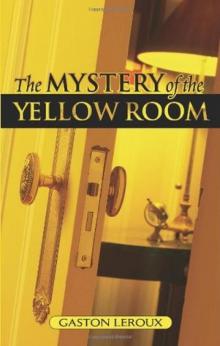 The Mystery of the Yellow Room
The Mystery of the Yellow Room The Secret of the Night
The Secret of the Night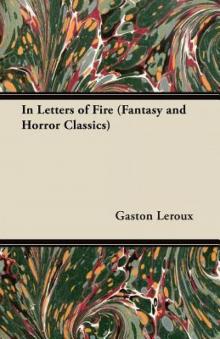 In Letters of Fire
In Letters of Fire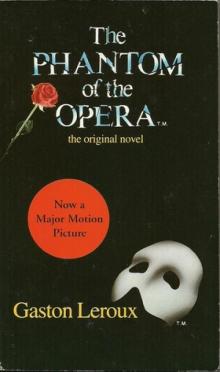 The Phantom of the Opera
The Phantom of the Opera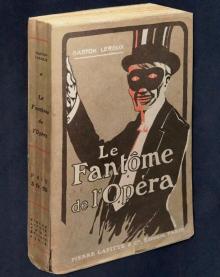 Fantôme de l'Opéra. English
Fantôme de l'Opéra. English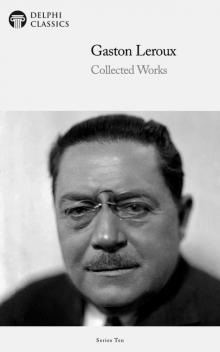 Collected Works of Gaston Leroux
Collected Works of Gaston Leroux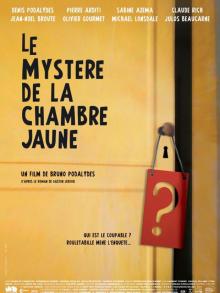 Le mystère de la chambre jaune. English
Le mystère de la chambre jaune. English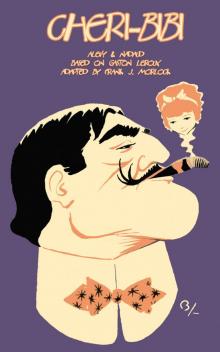 Cheri-Bibi: The Stage Play
Cheri-Bibi: The Stage Play The Phantom of the Opera (Oxford World's Classics)
The Phantom of the Opera (Oxford World's Classics)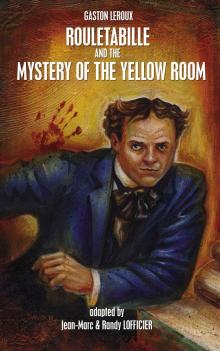 Rouletabille and the Mystery of the Yellow Room
Rouletabille and the Mystery of the Yellow Room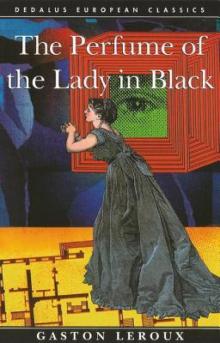 The Perfume of the Lady in Black
The Perfume of the Lady in Black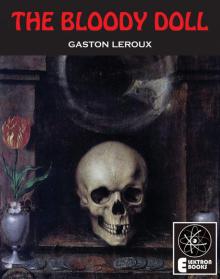 The Bloody Doll
The Bloody Doll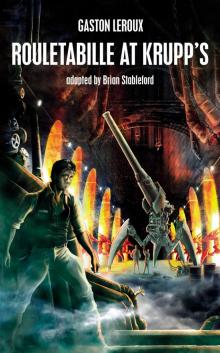 Rouletabille at Krupp's
Rouletabille at Krupp's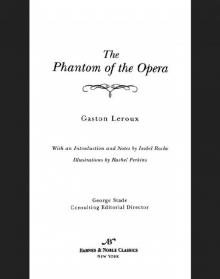 Phantom of the Opera (Barnes & Noble Classics Series)
Phantom of the Opera (Barnes & Noble Classics Series)